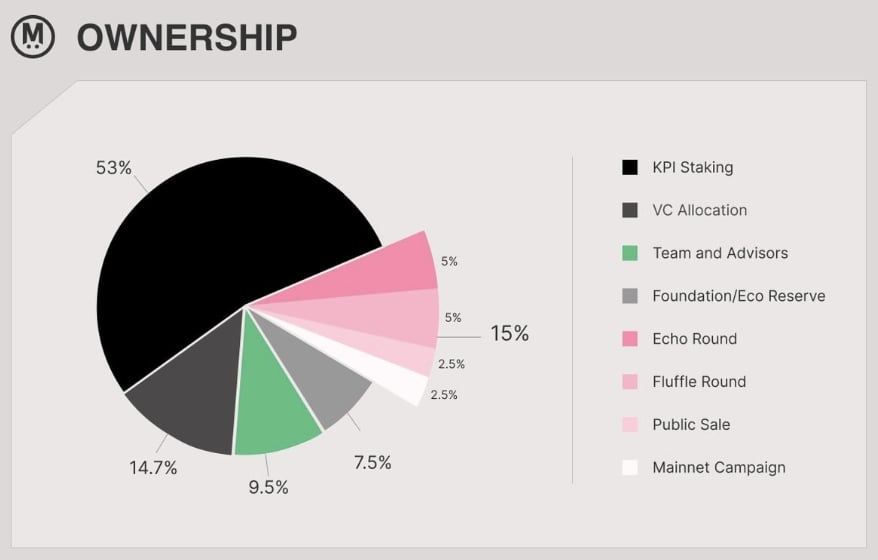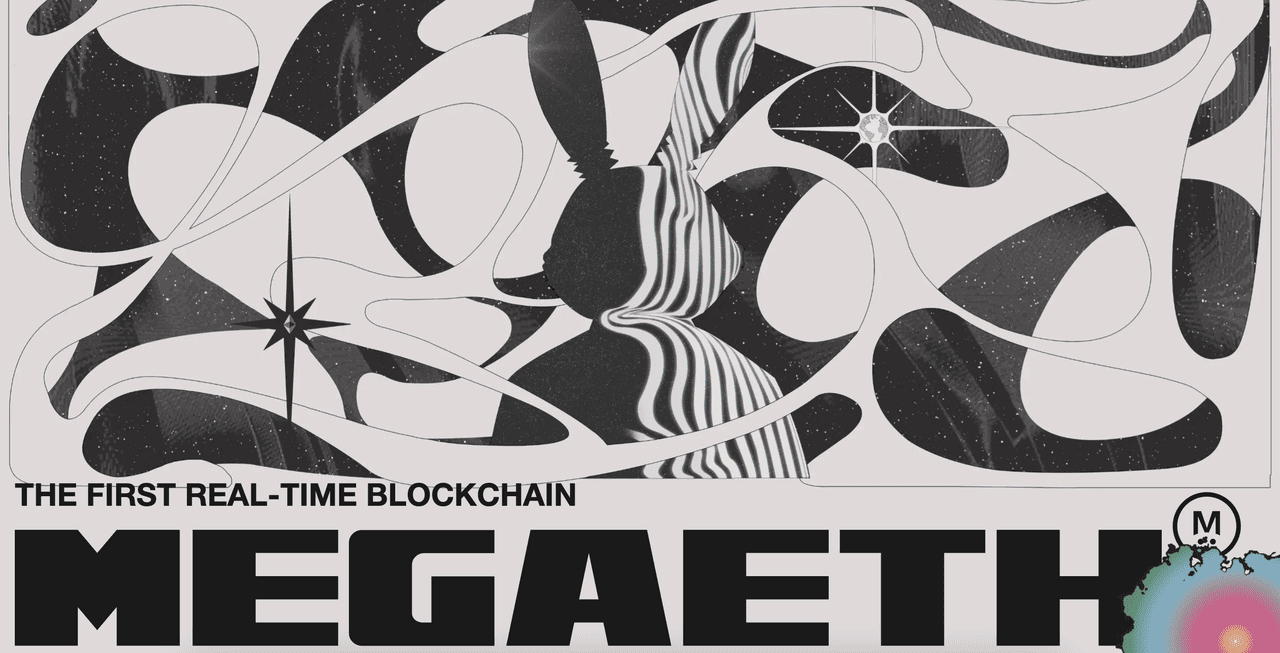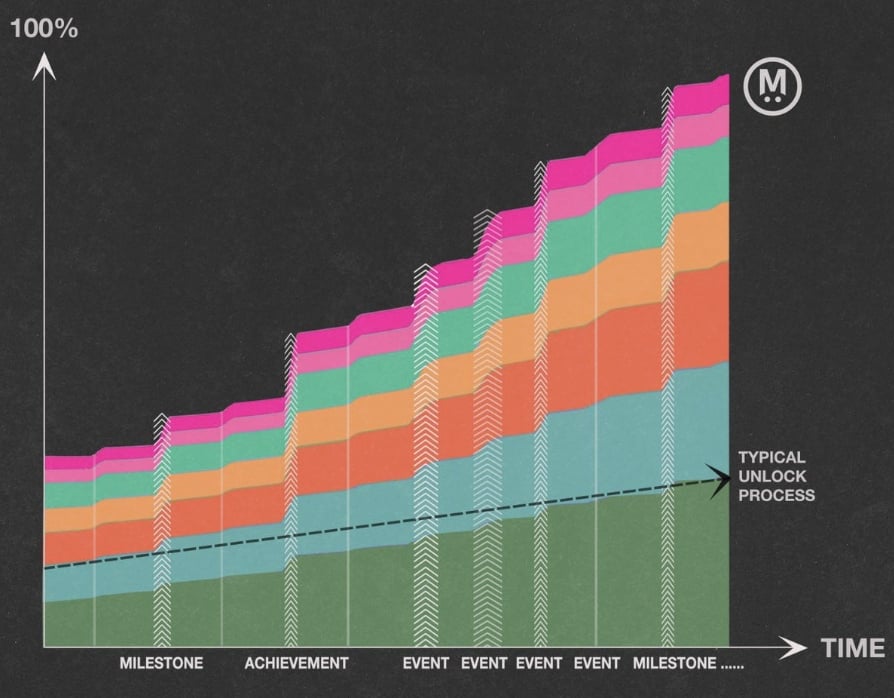MegaETH is a high-performance Ethereum Layer-2 network built to deliver real-time blockchain speed. Conceptualized by Yilong Li in 2022 and developed from mid-2024 after its initial fundraise, the project aims to solve Ethereum’s scalability challenges without compromising decentralization or developer compatibility. Often described as the world’s first real-time blockchain, MegaETH processes transactions and updates network states almost instantly, achieving Web2-level responsiveness while remaining fully compatible with the
Ethereum Virtual Machine (EVM) for seamless dApp deployment and migration.
MegaETH operates through a three-layer architecture made up of Sequencer Nodes that order and broadcast transactions, Prover Nodes that verify and generate proofs, and Full Nodes that maintain the network state. This structure enables the system to reach over 100,000 transactions per second (TPS) with average transaction costs below $0.01, allowing it to handle high-frequency trading, gaming, and other latency-sensitive decentralized applications efficiently.
How MegaETH Works
• Fast Transaction Speeds: Processes over 100,000 TPS, supporting decentralized exchanges, gaming, and AI-integrated services at scale.
• Real-Time Responsiveness: Operates with 10-millisecond block times, targeting 1 millisecond for near-instant confirmation and a Web2-like experience.
• Seamless EVM Compatibility: Fully compatible with the Ethereum Virtual Machine (EVM), allowing developers to deploy or migrate dApps without code modifications.
• Low and Predictable Fees: Keeps average transaction costs below $0.01, ensuring affordability even during high activity.
• Secure and Scalable Design: A modular, horizontally scalable framework preserves Ethereum-grade security while enabling large-scale performance and decentralized growth.
By combining speed, cost efficiency, and Ethereum compatibility, MegaETH redefines what a Layer-2 network can achieve, offering real-time blockchain performance with the trust and transparency of Ethereum.
Who Is Investing in MegaETH? Backers, Partners, and Ecosystem Support
MegaETH has attracted strong investor confidence since its early development, positioning itself as one of the most promising Ethereum Layer-2 projects. The team raised 20 million USD in a seed round led by Dragonfly Capital in June 2024, followed by a 10 million USD community round on Cobie’s Echo platform in December 2024. The project is now preparing for its upcoming public ICO on Sonar by Echo, with registration open from October 15 to 27, 2025.
Notable MegaETH investors include:
• Vitalik Buterin, Ethereum co-founder
• Joseph Lubin, ConsenSys CEO
• Dragonfly Capital, lead investor
With this mix of institutional backing, community participation, and strategic partnerships, MegaETH stands out as one of the best-funded and most closely watched Ethereum Layer-2 projects heading into 2026.
What Is USDm Stablecoin and How Is It Related to MegaETH?
USDm is MegaETH’s native
stablecoin, developed in partnership with
Ethena Labs to support the network’s real-time economy. It is designed to maintain a 1:1 peg to the U.S. dollar and is backed by Ethena’s USDtb, a
yield-bearing asset linked to tokenized U.S. Treasury reserves.
The integration of USDm allows MegaETH to lower transaction costs and improve liquidity across decentralized applications. Instead of relying solely on gas fees, the network can use yield generated from USDm reserves to subsidize user transactions and fund ecosystem incentives.
By embedding a stable, on-chain currency into its architecture, MegaETH aims to create a self-sustaining Layer-2 economy where payments, staking, and rewards all flow through USDm, enhancing scalability and long-term network stability.
MegaETH (MEGA) Tokenomics Overview
The $MEGA token powers MegaETH’s real-time Layer-2 economy, serving as both a utility and governance asset. It supports gas payments, staking for sequencer rotation, governance participation, and ecosystem incentives such as developer grants and community rewards.
MEGA Token Core Utilities:
1. Gas payments for MegaETH transactions at lower cost than Ethereum mainnet
2. Staking for sequencer rotation, network security, and latency proximity markets
3. Governance participation for upgrades and DAO voting
4. Ecosystem incentives such as developer grants, liquidity mining, and community rewards
MEGA Token Vesting: KPI-Based Staking and Rewards
Source: MegaETH X (Twitter)
Over 53% of total supply is allocated to KPI Staking, linking emissions to objective on-chain metrics that measure network health and adoption.
Key parameters:
• Rewards are gated to $MEGA stakers
• Time staked affects reward weight (10-day minimum, 30-day maximum)
• Even unvested tokens can stake, though their rewards follow lockup terms
Initial KPI Verticals:
• Ecosystem Growth – measures user adoption, developer activity, and dApp expansion
• Technical Performance – tracks throughput, latency, and uptime improvements
• MegaETH Decentralization – monitors validator diversity and geographic distribution
• Ethereum Decentralization – evaluates how MegaETH contributes to the broader Ethereum network’s decentralization
Key Vesting Rules
• Public sale tokens distributed at TGE (January 2026)
• Optional 1-year lockup for 10% discount
• Team tokens: 1-year cliff + 3-year linear vesting
• KPI staking emissions released based on performance milestones, not time
As these targets are achieved, new $MEGA tokens are unlocked and distributed to stakers, reinforcing long-term alignment between network usage and token value.
MEGA Allocation Breakdown

Source: MegaETH X (Twitter)
Total Supply: 10,000,000,000 MEGA
• KPI Staking – 53.3%, 5,330,000,000 MEGA
• VC Allocation – 14.7%, 1,470,000,000 MEGA
• Team and Advisors – 9.5%, 950,000,000 MEGA
• Foundation / Ecosystem Reserve – 7.5%, 750,000,000 MEGA
• Echo Round – 5%, 500,000,000 MEGA
• Fluffe Round – 5%, 500,000,000 MEGA
• Public Sale (Sonar) – 2.5%, 250,000,000 MEGA
• Sonar Bonus Pool / Mainnet Campaign – 2.5%, 250,000,000 MEGA
Will There Be a MegaETH ($MEGA) Airdrop?
Yes. MegaETH will launch its native token $MEGA, with around 5% of supply tied to The Fluffle, a soulbound NFT collection rewarding early contributors and community builders.
The public ICO on Sonar by Echo (October 27–30, 2025) and a bonus campaign (December 2025–January 2026) both play major roles in early token distribution. The campaign will reward the top 5,000 participants with up to 2× their original allocation based on mainnet activity.
$MEGA Key Distribution Phases
• Fluffle NFT: Phase 1 (February 2025, sold out) and Phase 2 (mid-2025, for Mega Mafia teams and active users)
• Public Sale: October 27–30, 2025, with final allocation results announced on November 5, 2025
• Bonus Campaign: December 2025–January 2026
While no separate airdrop has been confirmed, Fluffle NFTs, testnet participation, and ICO engagement are expected to influence future reward eligibility once full token distribution begins.
How to Participate in MEGA Airdrop?
You can participate in the MegaETH airdrop mainly through The Fluffle NFT program and the MegaETH ICO, which together form the project’s early $MEGA distribution plan.
1. Participate through NFT Allocation Model
The Fluffle collection includes 10,000 NFTs (two sets of 5,000) representing about 5% of total supply. Phase 1 rewarded over 80,000 early supporters, while Phase 2 was allocated to Mega Mafia teams and a smaller group of users identified through social media analysis. The Fluffle Round, priced at $2,650 with a $550 million valuation, has concluded, but participants should follow official MegaETH channels for any future NFT-based rewards.
2. Participate through ICO: Post-Sale Bonus and Potential Airdrop
Following the ICO, MegaETH confirmed a bonus token campaign lasting about 30 days on mainnet (December 2025–January 2026).
• Top 5,000 participants based on network activity can earn up to 2× their original allocation (100% bonus).
• Tokens purchased during the ICO will be distributed at TGE in January 2026.
While no separate airdrop date has been announced, the Fluffle NFT program and post-sale bonus leaderboard serve as the main early reward mechanisms for $MEGA holders. Additional incentives are expected to continue through KPI staking rewards once mainnet is live.
MegaETH Roadmap: Key Phases, Milestones, and What’s Launching Next
MegaETH has not yet published a full public roadmap, but several major milestones and upcoming goals have been confirmed.
MegaETH Past Milestones
• June 2024: Raised $20 million in a seed round led by Dragonfly Capital.
• December 2024: Raised $10 million in a community round on Cobie’s Echo platform.
• March 2025: Launched public testnet and completed Fluffe NFT Phase 1.
• October 27–30, 2025: Held public ICO on Sonar by Echo, raising $450 million from $1.39 billion in bids.
• November 19–21, 2025: Final allocation and refund processing completed.
What’s Next for MegaETH
• January 2026: $MEGA trading launch following ICO distribution.
• Early 2026: Fluffe NFT Phase 2 drop for active community members.
• Post-mainnet: KPI staking and milestone-based emissions go live as MegaETH targets sub-millisecond latency and 100,000 TPS performance.
Conclusion
MegaETH represents a major step forward for Ethereum scalability, combining real-time performance with Layer-2 efficiency and EVM compatibility. With its innovative KPI-based staking, community-driven Fluffle NFT distribution, and performance-linked token model, MegaETH is building a system that rewards genuine network participation rather than speculation. As the project moves toward its mainnet launch and TGE in January 2026, it positions itself as one of the most ambitious Layer-2 networks aiming to bridge Web2 speed with Web3 trust.
Related Reading
Frequently Asked Questions (FAQs) on MegaETH
1. Will there be a MEGA airdrop?
Yes. MegaETH will launch its native token $MEGA through The Fluffle NFT program and the public sale on Sonar by Echo. The 10,000 soulbound Fluffle NFTs represent about 5% of total supply, rewarding early supporters and community members. A bonus campaign (December 2025–January 2026) will also reward top participants with up to 2× allocation, ahead of the Token Generation Event (TGE) in January 2026.
2. When is the MegaETH (MEGA) ICO?
The public ICO takes place on Sonar by Echo from October 27 to 30, 2025, followed by allocation results on November 5, 2025. A bonus campaign runs from December 2025 to January 2026, rewarding top participants with up to 2× their original allocation.
3. When is the MegaETH (MEGA) airdrop?
An exact airdrop date has not been announced. However, early eligibility is expected to come from Fluffle NFT holders, testnet users, and ICO participants, with rewards distributed around the Token Generation Event (TGE) in January 2026.
4. When will the MegaETH mainnet launch?
The MegaETH mainnet is expected to launch between December 2025 and early 2026, coinciding with the TGE and token trading debut.
5. Is MegaETH an L2?
Yes. MegaETH is an Ethereum Layer-2 (L2) network that enhances speed, scalability, and efficiency while maintaining full compatibility with the Ethereum Virtual Machine (EVM).
6. What is The Fluffe NFT and how does it relate to tokens?
The Fluffle is a 10,000-piece soulbound NFT collection used for MegaETH’s early token distribution. It consists of two phases of 5,000 NFTs each and represents 5% of total $MEGA supply. Holders include early supporters, Mega Mafia teams, and active community members, who may also gain eligibility for future airdrop rewards.




